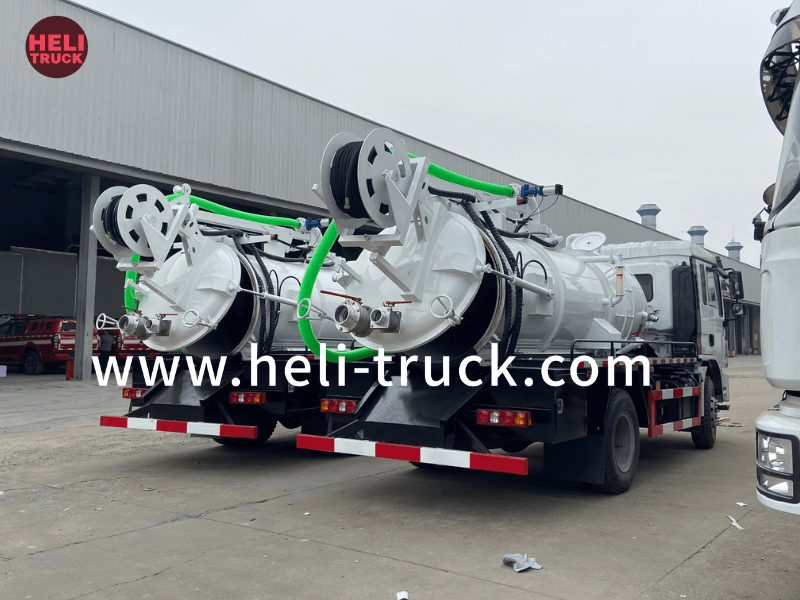Introduction
Garbage compactor trucks play a vital role in waste management systems by collecting, compacting, and transporting solid waste from residential, commercial, and industrial areas to disposal sites. One of the key factors that determine the effectiveness of these trucks is their capacity. In this article, we will delve into the importance of garbage compactor truck capacity, explore the various types of compactor trucks available, and discuss strategies for maximizing efficiency through proper capacity management.
Understanding Garbage Compactor Truck Capacity
Garbage compactor truck capacity refers to the volume of waste that the truck can hold before it needs to be emptied. This capacity is typically measured in cubic yards or cubic meters and can vary depending on the size and design of the truck. The larger the capacity of the compactor truck, the more waste it can collect before requiring a trip to the disposal site.
Types of Garbage Compactor Trucks
There are several types of garbage compactor trucks available in the market, each with its own unique features and capacity specifications. Some of the common types include:
1. Rear Loader Compactor Trucks: Rear loader compactor trucks are equipped with a compactor mechanism at the rear of the truck. These trucks are commonly used for residential waste collection and have a moderate to large capacity, typically ranging from 20 to 40 cubic yards.
2. Front Loader Compactor Trucks: Front loader compactor trucks have a hydraulic lifting mechanism at the front of the truck for collecting large dumpsters commonly found in commercial and industrial settings. These trucks have a larger capacity compared to rear loaders, usually ranging from 30 to 45 cubic yards.
3. Side Loader Compactor Trucks: Side loader compactor trucks feature a compactor mechanism on the side of the truck, allowing for efficient curbside waste collection. These trucks are popular for residential and commercial use and typically have a capacity of 15 to 30 cubic yards.
4. Roll-Off Compactor Trucks: Roll-off compactor trucks are designed to transport large open-top containers, known as roll-off containers, to and from waste disposal sites. These trucks have a high capacity, ranging from 20 to 40 cubic yards, making them ideal for construction and demolition waste.
Maximizing Efficiency Through Proper Capacity Management
Effective capacity management is essential for maximizing the efficiency of garbage compactor trucks and optimizing waste collection operations. Here are water tank truck for proper capacity management:
1. Route Planning: Efficient route planning plays a crucial role in optimizing the capacity utilization of garbage compactor trucks. By mapping out the most efficient collection routes based on the volume of waste generated in different areas, truck operators can minimize empty trips and maximize the amount of waste collected per trip.

2. Compaction Ratio: The compaction ratio of a garbage compactor truck indicates how effectively it can compact waste to maximize its capacity. By ensuring that the compactor mechanism is properly maintained and operated, truck operators can increase the compaction ratio and reduce the frequency of trips to the disposal site.
3. Real-Time Monitoring: Implementing real-time monitoring systems on garbage compactor trucks can help track the amount of waste collected and the remaining capacity of the truck. This data can be used to optimize collection schedules, identify high-volume areas, and make informed decisions to improve capacity utilization.
4. Maintenance and Inspection: Regular maintenance and inspection of compactor trucks are essential to ensure optimal performance and prevent breakdowns that can disrupt waste collection operations. By addressing any mechanical issues promptly and keeping the compactor mechanism in good working condition, truck operators can maintain the truck's capacity and efficiency.
Conclusion
Garbage compactor truck capacity plays a critical role in the effectiveness of waste collection and disposal operations. By understanding the different types of compactor trucks available, implementing proper capacity management strategies, and maximizing compaction efficiency, waste management systems can achieve higher levels of efficiency and sustainability. It is essential for waste management authorities and truck operators to prioritize capacity planning and maintenance to ensure smooth and cost-effective waste collection services for communities.
